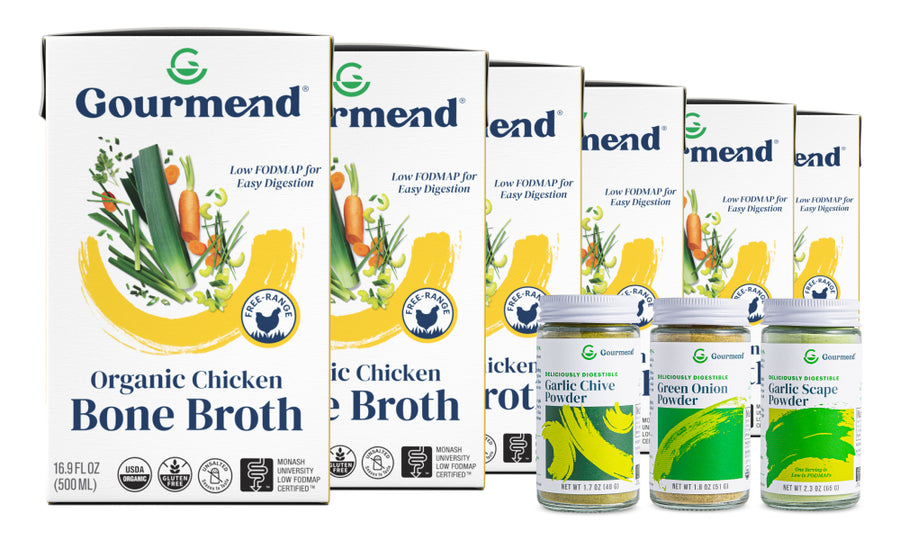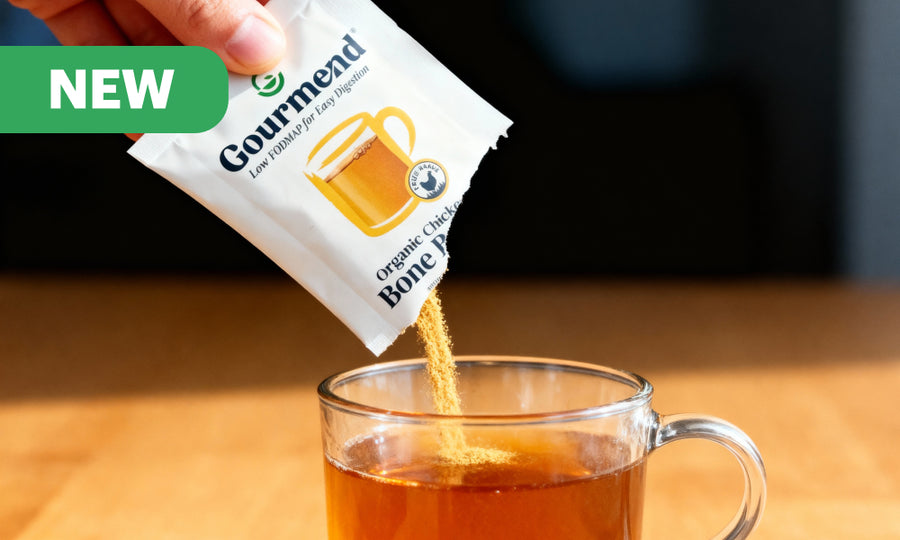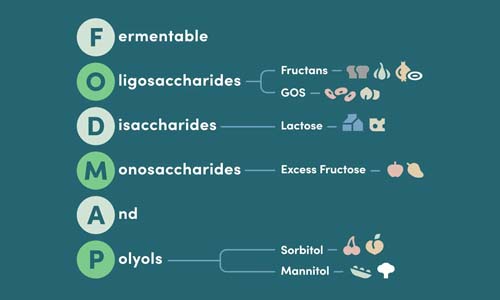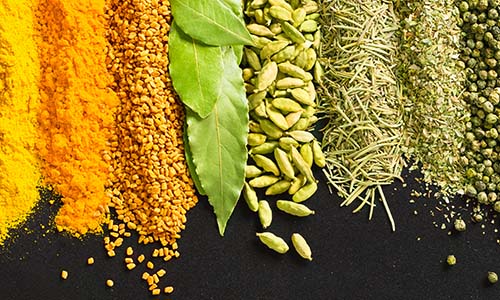Low FODMAP Cheese Guide: What You Can Actually Eat

Cheese lovers with IBS, rejoice—most low FODMAP cheese options are absolutely delicious and completely doable on your gut-friendly eating plan. While navigating cheese choices might feel overwhelming at first, the reality is that many of your favorite varieties are naturally low in the problematic sugars that trigger digestive discomfort. The key lies in understanding which cheeses work best and how much you can enjoy without symptoms.
Key Takeaways
- Many low FODMAP cheese options are delicious and suitable for those with IBS.
- Choosing the right cheeses can help avoid digestive discomfort caused by problematic sugars.
- Understanding which cheeses are low FODMAP is essential for managing symptoms.
- Portion control plays a key role in enjoying cheese without triggering symptoms.
Table of Contents
- Understanding IBS and Its Connection to Dairy
- What Makes Cheese Low FODMAP?
- Identifying Your Cheese Low FODMAP Options
- Comprehensive Low FODMAP Cheese List
- Managing Cheese Consumption Strategically
- Practical Cheese Integration Tips
- High FODMAP Cheeses to Avoid or Limit
- Troubleshooting Cheese-Related Symptoms
- Building Confidence with Low FODMAP Cheese
Here's the thing about cheese and digestive health: it's not as black-and-white as you might think. With nearly two-thirds of Americans experiencing digestive issues and close to a billion people worldwide living with IBS, understanding how dairy fits into a gut-friendly diet becomes crucial. The good news? Most cheeses are naturally lower in FODMAPs than you'd expect, thanks to the cheese-making process itself. Monash University is a trusted resource for up-to-date FODMAP research and cheese testing.
Understanding IBS and Its Connection to Dairy
Let's start with the basics. IBS affects your digestive system in ways that can make certain foods feel like dietary landmines—bloating, gas, abdominal pain, and unpredictable bathroom trips become unwelcome dinner guests. When it comes to dairy, up to one-third of people with IBS also deal with lactose intolerance, meaning their bodies don't produce enough lactase enzyme to properly digest lactose, the sugar naturally found in milk.
But here's where it gets interesting: not all dairy triggers IBS symptoms. The real culprit is often lactose itself, not the dairy proteins. Those uncomfortable symptoms—the bloating that makes your jeans feel two sizes too small, the digestive distress that hits 30 to 45 minutes after eating—these typically trace back to that milk sugar, not necessarily the cheese itself.
This distinction matters because it opens up possibilities. When we talk about cheese fodmap content, we're really talking about lactose levels, and cheese production naturally reduces these problematic sugars through fermentation and aging processes.
What Makes Cheese Low FODMAP?

The magic happens during cheese-making. As cheese ages, beneficial bacteria work overtime, converting lactose into lactic acid. This natural fermentation process is why aged cheddar sits so much better in your stomach than a glass of milk. Fresh cheeses like ricotta or cottage cheese haven't had this time to develop, so they retain more of their original lactose content.
Think of it like this: the longer cheese ages, the more those helpful bacteria have worked to pre-digest the problematic sugars for you. Hard, aged cheeses become your digestive allies, while soft, fresh varieties require more caution and smaller portions.
Low FODMAP cheese guidelines define acceptable options as containing less than one gram of lactose per standard serving—about 40 grams, or roughly two thumb-sized portions. This isn't arbitrary; it's based on research showing what most people with IBS can comfortably tolerate without triggering symptoms.
Identifying Your Cheese Low FODMAP Options
Reading labels becomes your superpower here. Look for the sugar content on nutrition panels—this number reflects remaining lactose. Ideally, you want less than one gram per serving. Ingredient lists matter too; avoid cheeses with high FODMAP additives or mysterious flavorings that could sneak problematic ingredients past your guard.
The Monash University Low FODMAP app serves as your reliable reference guide, offering up-to-date testing results and recommended serving sizes. When in doubt, these evidence-based resources beat guesswork every time.
Portion Control Principles
Even with low FODMAP cheese varieties, portion size remains crucial. That 40-gram serving size isn't just a suggestion—it's your digestive comfort zone. Going beyond this threshold can push even naturally low-lactose cheeses into problematic territory.
Individual tolerance varies, though. Some people handle larger portions without issues, while others need to stay conservative. Starting with smaller amounts and gradually testing your limits helps you find your personal sweet spot without uncomfortable consequences.
Understanding Cheese Production Impact
The cheese-making process itself deserves appreciation. During production, bacterial cultures feast on lactose, transforming it into lactic acid that gives cheese its characteristic tang. Draining whey further reduces lactose content, and extended aging continues this beneficial process.
This explains why feta gluten free concerns often come up—people assume processed foods contain problematic ingredients, but traditional feta made from sheep or cow milk typically contains minimal lactose and no gluten. The confusion often stems from not understanding how traditional cheese-making naturally creates gut-friendly products.
At Gourmend Foods, we understand that navigating dietary restrictions shouldn't mean sacrificing flavor or satisfaction. Our Low FODMAP Starter Bundle and Pantry Starter Pack provide the perfect base for cheese-forward dishes that support your digestive health while delivering the rich, complex flavors you crave—no hidden ingredients, no shortcuts, just real food that works with your body, not against it.
Comprehensive Low FODMAP Cheese List

Here's your go-to reference for cheese low fodmap options that you can confidently enjoy up to 40-gram servings. These varieties have been tested and proven gentle on sensitive digestive systems, thanks to their naturally low lactose content from the aging and fermentation processes.
Aged Hard Cheeses
Cheddar, Swiss, Gruyere, and Parmigiano-Reggiano top the list for IBS-friendly options. These cheeses undergo extended aging that virtually eliminates lactose content, making them your safest bets. Comté and Manchego offer sophisticated flavor profiles while remaining gentle on your gut, perfect for elevating everyday meals into gourmet experiences.
Semi-Soft Favorites
Brie, Camembert, and Havarti bring creamy textures without the digestive drama. These cheeses strike the perfect balance between indulgent mouthfeel and gut-friendly composition. Monterey Jack and Colby provide mild, versatile flavors that work beautifully in everything from grilled sandwiches to cheese boards.
Fresh Cheese Options
Cottage cheese, cream cheese, and ricotta require more attention to portion sizes since they retain slightly higher lactose levels. However, that 40-gram serving—about two tablespoons—still fits comfortably within low FODMAP guidelines. Quark and paneer offer protein-rich alternatives that work wonderfully in both sweet and savory applications.
Specialty Mediterranean Varieties
Feta cheese fodmap concerns often arise unnecessarily—traditional feta made from sheep or cow milk contains minimal lactose and delivers bold, tangy flavors. Halloumi provides that satisfying squeaky texture and grills beautifully, while Pecorino adds sharp, nutty notes to pasta dishes and salads.
Managing Cheese Consumption Strategically
Success with low FODMAP cheese comes down to smart strategies rather than strict restrictions. Keeping a food diary helps you identify your personal tolerance levels and spot patterns between specific cheese types and your symptoms. Some people handle aged goat cheese better than cow's milk varieties, while others find the opposite true.
Consider the fat content beyond just FODMAPs—some high-fat cheeses might trigger IBS symptoms independently of their lactose levels. This doesn't mean avoiding them entirely, but rather being mindful of how rich cheeses affect your individual digestive system. Moderation becomes your friend, allowing you to enjoy variety without overwhelming your gut. If you're looking for a convenient way to stock your pantry with gut-friendly essentials, check out our Low FODMAP Foodie Bundle.
Reading Labels Effectively
Processed cheese products often contain additives that can sneak high FODMAP ingredients into otherwise acceptable options. American cheese slices, flavored cream cheeses, and spreadable varieties frequently include ingredients like inulin, high fructose corn syrup, or garlic powder that can trigger symptoms even when the base cheese would be fine.
Stick to simple ingredient lists—milk, cultures, salt, and enzymes represent the gold standard. When you see lengthy ingredient panels with unfamiliar additives, approach with caution or choose simpler alternatives that align with your gut-friendly goals. For seasoning your cheese dishes without FODMAP worries, try our Low FODMAP Garlic Scape Powder or Low FODMAP Green Onion Powder for safe, flavorful options.
Practical Cheese Integration Tips
Transform your low FODMAP cheese knowledge into delicious reality with strategic pairing and preparation techniques. Aged cheddar melts beautifully over roasted vegetables seasoned with our Gourmend Organic Vegetable Broth, creating rich, satisfying meals that support your digestive health. Parmesan adds umami depth to quinoa bowls and rice dishes without overwhelming sensitive stomachs.
Create impressive cheese boards using a variety of textures and flavors within your 40-gram portions. Combine creamy brie with sharp aged cheddar and tangy feta, accompanied by low FODMAP crackers and fresh grapes. This approach satisfies cravings while maintaining portion control and digestive comfort. For more inspiration, explore our Low FODMAP Recipes blog for creative ways to enjoy cheese in gut-friendly meals.
For cooking applications, hard cheeses work exceptionally well in our low FODMAP recipes. Grated Gruyere elevates simple scrambled eggs into restaurant-quality dishes, while crumbled feta transforms basic salads into Mediterranean-inspired meals. The key lies in using cheese as a flavor enhancer rather than the main event, allowing you to enjoy maximum taste impact within safe serving sizes. You might also enjoy our Ultimate Low FODMAP Frittata recipe for a delicious, cheese-forward breakfast idea.
Remember that individual tolerance varies significantly, and what works perfectly for one person might require adjustment for another. Start conservatively with new cheese varieties, pay attention to your body's responses, and gradually expand your options as you build confidence in your personal tolerance levels. With this knowledge and approach, cheese can remain a delicious, satisfying part of your gut-friendly eating plan rather than a source of anxiety or digestive discomfort.
High FODMAP Cheeses to Avoid or Limit
While most natural cheeses fit comfortably into a low FODMAP cheese plan, certain varieties require extra caution or complete avoidance. Processed cheese products like American singles and spreadable cheese wedges often contain high FODMAP additives, artificial flavors, and preservatives that can trigger symptoms even in small amounts. These products frequently include inulin, high fructose corn syrup, or onion powder that bypass the natural fermentation benefits of traditional cheese-making.
Flavored cream cheeses present another challenge, as manufacturers often add garlic, herbs with high FODMAP seasonings, or fruit preparations containing excess fructose. Even seemingly innocent varieties like herb and garlic cream cheese can pack enough FODMAPs to cause digestive distress. When you're craving flavored options, consider making your own using plain cream cheese and low FODMAP additions like chives or the green parts of scallions. For more tips on safe ingredient swaps, visit our Learn blog section.
Large servings of otherwise acceptable fresh cheeses can quickly push you into moderate or high FODMAP territory. While 40 grams of cottage cheese works fine for most people, doubling that portion might trigger symptoms simply due to accumulated lactose content. The same principle applies to ricotta and cream cheese—they're not inherently problematic, but portion control becomes crucial for maintaining digestive comfort.
Troubleshooting Cheese-Related Symptoms
Sometimes cheese fodmap reactions occur despite following all the guidelines perfectly. Individual lactase enzyme production varies significantly, and stress, illness, or other dietary factors can temporarily reduce your tolerance levels. If you're experiencing unexpected symptoms with previously well-tolerated cheeses, consider keeping a detailed food and symptom diary to identify patterns.
Timing matters more than many people realize. Eating cheese on an empty stomach might trigger symptoms that wouldn't occur when the same cheese accompanies a balanced meal. The presence of other foods slows digestion and can help buffer potential reactions. Similarly, combining multiple dairy products in one meal—even low FODMAP ones—might exceed your personal threshold despite each item being individually acceptable. For more on how to balance your meals, see this comprehensive guide to the low FODMAP diet.
Working with Healthcare Providers
If you're struggling to identify your cheese tolerance levels or experiencing persistent symptoms, consulting with a registered dietitian who specializes in digestive health can provide personalized guidance. They can help you navigate the reintroduction phase of the low FODMAP diet systematically, identifying your specific trigger foods and safe serving sizes through structured testing.
Remember that IBS management extends beyond just FODMAP content. Stress management, regular meal timing, adequate hydration, and overall dietary balance all contribute to digestive comfort. Sometimes what appears to be a cheese intolerance might actually reflect broader lifestyle factors affecting your gut health.
Building Confidence with Low FODMAP Cheese
Successfully incorporating cheese into your gut-friendly eating plan requires patience, experimentation, and trust in your body's signals. Start with the safest options like aged cheddar or Parmesan, establish your baseline tolerance, then gradually explore other varieties as your confidence grows. This methodical approach prevents overwhelming your system while expanding your culinary options.
Consider cheese as part of your broader low FODMAP toolkit rather than a standalone challenge. When you're preparing meals using our Ultimate Low FODMAP Starter Kit and seasonings, adding appropriate cheese portions creates restaurant-quality dishes that support both your taste preferences and digestive health. The combination of high-quality, organic ingredients with proper portion control transforms potentially problematic foods into allies in your wellness journey.
The world of low FODMAP cheese offers remarkable variety and flavor possibilities when approached with knowledge and strategy. From creamy brie to sharp aged cheddar, tangy feta to rich Gruyere, your options extend far beyond basic restrictions. By understanding the science behind lactose content, respecting portion guidelines, and listening to your individual responses, cheese can remain a delicious, satisfying part of your daily meals. Remember that managing IBS and digestive sensitivities is a journey of discovery—be patient with yourself as you build the confidence to enjoy food without fear or discomfort.
Check out our Low Fodmap Bundles
Frequently Asked Questions
What cheese is low in FODMAP?
Low FODMAP cheeses are typically those that are aged and have minimal lactose content. Examples include cheddar, Parmesan, Swiss, and feta. These cheeses are usually tolerated well because the aging process reduces lactose, making them easier to digest for those sensitive to FODMAPs.
What cheese is okay to eat with IBS?
For individuals with IBS, cheeses that are low in lactose and FODMAPs are generally safe options. Hard cheeses like cheddar, Parmesan, and Gouda are often well tolerated, as well as some soft cheeses like mozzarella in controlled portions. It's always best to monitor your own symptoms since tolerance can vary.
What is the most gut friendly cheese?
The most gut-friendly cheeses tend to be those that are aged and fermented, such as Parmesan and aged cheddar. These cheeses have lower lactose levels, which reduces the chance of digestive discomfort. Additionally, natural probiotic content in some fermented cheeses can support gut health.
Can you eat mozzarella cheese on a low-FODMAP diet?
Yes, mozzarella cheese is generally considered low in FODMAPs, especially when consumed in moderate amounts. Fresh mozzarella contains some lactose but usually at low enough levels that it doesn't trigger symptoms for most people following a low-FODMAP diet. Always check portion sizes to stay within recommended limits.
Is coffee low in FODMAP?
Coffee itself is low in FODMAPs, making it a suitable option for those following a low-FODMAP diet. However, some people with IBS may find that coffee can irritate their gut due to its acidity and caffeine content, so individual tolerance can vary. It's best to observe how your body responds when consuming coffee.
What cheeses are the worst for lactose intolerance?
Cheeses that are high in lactose are generally the worst for people with lactose intolerance. These include fresh, soft cheeses like ricotta, cream cheese, cottage cheese, and mascarpone. Because they contain higher levels of lactose, these cheeses can cause digestive discomfort and symptoms associated with lactose intolerance.





